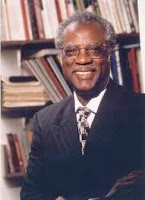Midnight Oil: "The Dead Heart"
Sly & The Family Stone: "Everyday People"
Chapter six discusses globalism, multiculturalism, and the challenges associated with defining social justice in a global world. Over the past several weeks we have discovered that justice is not an easy concept to define. Capeheart and Milovanovic claim that no one definition of justice is sufficient for all points in history. These authors argue that the definition of justice changes with the passing of time. Our current multicultural, global world is no exception. The world today is much different than it was 50 or 100 years ago. Modern technology makes it possible to be closer to people on the other side of the world than we ever have been before and people of all different cultures must now share one common home: the Earth. With this, however, comes the need to revise the definition of justice so that it fits our evolving society. This blog explores the theory of justice that applies to our world today and the issues that it faces in the multicultural, global society of the 21st century.

Multiculturalism: “The process whereby a variety of groups within existing states – religious groups, ethnic groups, groups defined by gender or sexual orientation, and so on – increasingly assert their separate cultural identities and demand that those identities be given political recognition.”
Miller (2001, 246, 252)
According to James A. Banks, the Kerry and Linda Killinger Endowed Chair in Diversity Studies and Director of the Center for Multicultural Education at the University of Washington, an individual can belong to many different groups. Multiculturalism is not made up of simply Blacks and Whites. A person’s level of identity cannot be reduced to a one-word description of where he or she is from, but rather varies greatly and is heavily dependent on the context of the situation. Religion, Gender, Sexual Orientation, Socio-economic class, and ethnicity are only a few of the classifications that, according to Banks, make up a person’s culture. For example, a Hispanic woman’s culture cannot be said to be simply Hispanic. She is a woman. She is Chicano. She is Catholic. She is in the middle class. She is deaf. All of these things shape her personality and make her the person that she is. They are her culture, and it is just as complex as she is.
 Dr. James A. Banks: Click here to learn more about Dr. Banks and his work: http://faculty.washington.edu/jbanks/
Dr. James A. Banks: Click here to learn more about Dr. Banks and his work: http://faculty.washington.edu/jbanks/

The United States is known to be a cultural melting pot, a land where people of all different cultures can come for freedom. Even today, immigration is a major issue, as the country debates what to do about illegal immigrants coming into the U.S. from Mexico. As you can see below, there are many different ways that America perceives its growing multiculturalism:
· The Great Mexico Wall: Some believe that the solution to illegal immigration is the building of a physical wall between the United States and Mexico to stop people from entering the country that way. http://www.globalsecurity.org/security/systems/mexico-wall.htm
· “The biggest problem with “illegal immigration” is the process. When my grandparents came to this country, they were running away from oppression. They didn’t care to file the proper paperwork to enter the country. But we had Ellis Island to process their admission. What we need today is a way to process immigrants as they arrive so that they aren’t “illegal.” But for Ellis Island, I am sure that I would be the grandson of illegals.” – Hal Cohen
· 1000 Immigrants Celebrate U.S. Citizenship at the Walt Disney World Resort: http://www.youtube.com/watch?v=tvhIQuObFus
· Arizona Immigration Law: http://www.youtube.com/watch?v=7pPWy5ioohM
The new issues surrounding immigration call for a new definition of justice. As immigration causes the United States to be more of a multicultural society, those working for social justice must address the issues of immigration and serve people belonging to all different cultures. For example:
· Centro de la Raza is a Seattle organization that works to promote justice by serving the needs of the Hispanic community. “El Centro de la Raza is a voice and a hub for Seattle and Martin Luther King, Jr. County’s Latino community as we advocate on behalf of our people and work to achieve social justice. Through our comprehensive programs and services, we empower members of the Latino community as fully participating members of society. We also work to raise awareness with the general public, and government, business and civic leaders about the needs of the Chicano/Latino community in the United States.” http://www.elcentrodelaraza.com/aboutus.htm
No. The issue of immigration in the United States demonstrates the role that justice plays in the multicultural society that we live in. But it is only one very small example of how multiculturalism can be seen in today’s society. Growing multiculturalism can be seen all over the world, and it is equally important in its influence on justice on a much larger scale as well.
The following are a few organizations that seek to promote justice around the world, keeping in mind that we live in a multicultural community:
According to Miller, social justice requires that everyone’s needs be met according to a standard of need. But how do you do this in a multicultural, global society? Miller argues that differences in culture lead to differences in values in social justice. However, this is not the case within multicultural societies because ultimately humanity’s needs are the same and the fundamentals of social justice will be the same regardless of culture. The difference with justice in a multicultural world is that it must be tailored in a way to provide for people of different cultures and to help them live in one community. The basic needs provided by social justice will be the same throughout time, but as times change, the way that justice does this will change as well.